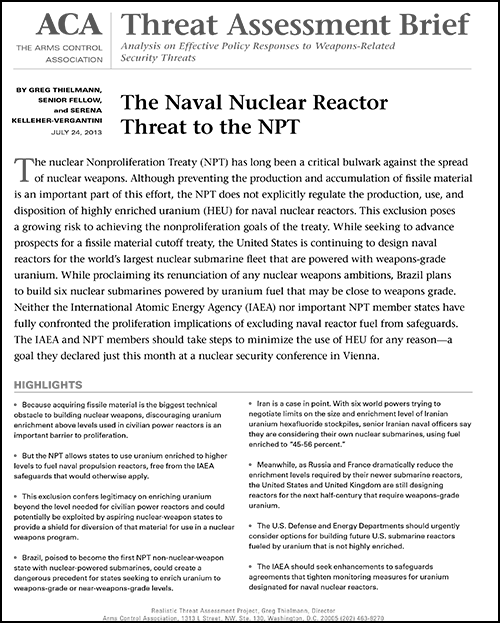By Greg Thielmann and Serena Kelleher-Vergantini
July 24, 2013
 |
| Download PDF |
The nuclear Nonproliferation Treaty (NPT) has long been a critical bulwark against the spread of nuclear weapons. Although preventing the production and accumulation of fissile material is an important part of this effort, the NPT does not explicitly regulate the production, use, and disposition of highly enriched uranium (HEU) for naval nuclear reactors. This exclusion poses a growing risk to achieving the nonproliferation goals of the treaty. While seeking to advance prospects for a fissile material cutoff treaty, the United States is continuing to design naval reactors for the world’s largest nuclear submarine fleet that are powered with weapons-grade uranium. While proclaiming its renunciation of any nuclear weapons ambitions, Brazil plans to build six nuclear submarines powered by uranium fuel that may be close to weapons grade. Neither the International Atomic Energy Agency (IAEA) nor important NPT member states have fully confronted the proliferation implications of excluding naval reactor fuel from safeguards. The IAEA and NPT members should take steps to minimize the use of HEU for any reason—a goal they declared just this month at a nuclear security conference in Vienna.
